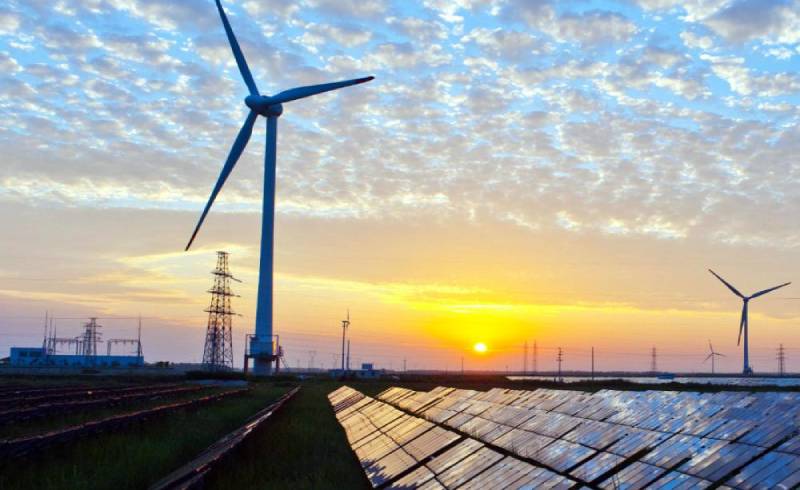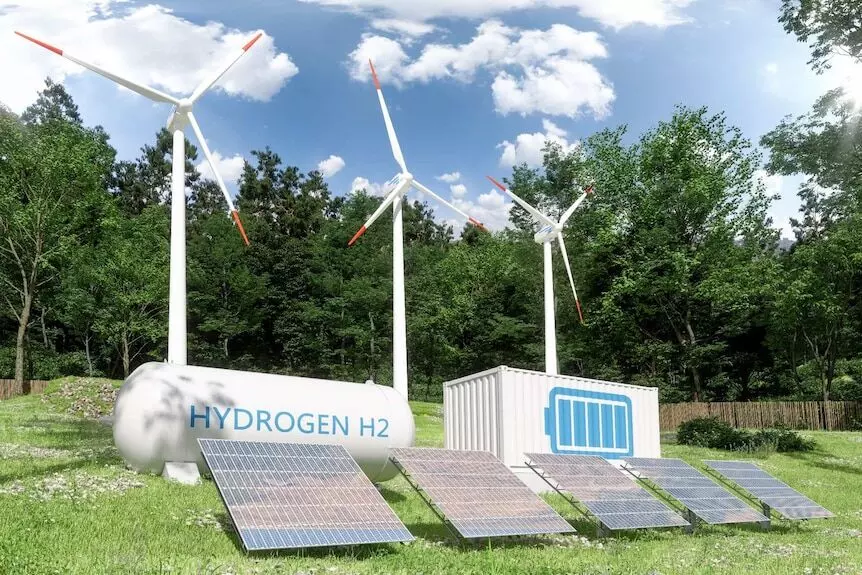Fuel cells, when coupled with hydrogen, are clean, reliable, and efficient energy sources, where water is the only by-product. It usually works like batteries, but do not need recharging if there is a constant source of fuel and oxygen. Fuel cells can power everything from cars to buildings.
What is fuel cell?
A hydrogen fuel cell is an electrochemical device that continuously generates electricity without the need for any intermediate energy conversion. Hydrogen fuel cells work like batteries, but they do not need any recharging as they produce electricity if there is a supply of hydrogen (H2) and oxygen (O2) as fuels.
A hydrogen fuel cell is made up of a negative electrode (anode), and a positive electrode (cathode) sandwiched around an electrolyte. Hydrogen is fed to the anode, and the air is fed to the cathode. In fuel cell, a catalyst at the anode separates hydrogen molecules into protons and electrons, the electrons go through an external circuit, creating a flow of electricity. The protons migrate through the electrolyte to the cathode, where they unite with oxygen and electrons to produce water and heat.
Fuel cell technology is not a new technology as it is already used in space applications and the energy sector for a long time. However, adopting this technology in the automotive sector has been sluggish. Owing to the necessities of original equipment manufacturer (OEMs) to go carbon neutral, advances in this technology are being made as many companies have launched production-ready vehicles in markets like Canada, Japan & US.
Use of fuel cells
Many countries are spending enormous amounts of money into the development of hydrogen fuel cells. Burning oil products (or any other fossil fuels) produces air pollution; most specifically, burning releases carbon dioxide which contributes to global warming and ultimately leads to climate change.
The use of hydrogen fuel cells range from large electricity generating plants to small devices like cell phones or laptops.
Furthermore, the most promising use for hydrogen as fuel (for the immediate future at least) are in vehicles, and there are already hydrogen based vehicles on the road today. The theoretical maximum efficiency of hydrogen fuel cells is 83%, with realistic efficiencies around 60%.
Combined with an electric motor of 90% efficiency, the vehicles can achieve an efficiency of 54% before factoring in other energy losses. This is around 2 – 2.5 times higher than a typical gasoline-powered vehicle.
There is plenty of criticism for these types of vehicles, as many claim the cost of these vehicles will never be practical. The platinum in the hydrogen fuel cells has made them expensive, but advances are bringing the price down. The durability and performance of such systems, along with the infrastructure necessary to accommodate them, is also under scrutiny.
Other uses:
In buildings, hydrogen fuel cells could be blended into existing natural gas networks, with the highest potential in multifamily and commercial buildings, particularly in dense cities while longer-term prospects could include the direct use of hydrogen in hydrogen boilers or fuel cells.
In power generation, fuel cells is one of the leading options for storing renewable energy, and hydrogen and ammonia can be used in gas turbines to increase power system flexibility. Ammonia could also be used in coal-fired power plants to reduce emissions.
The road ahead
Hydrogen fuel cell technology is still at a very nascent stage in the country, and there is limited infrastructure and scale of hydrogen dispensing units available. This makes the acquisition and total cost of ownership for fuel cell electric vehicles (FCEVs) higher. Further, most hydrogen production methods deployed today rely on fossil fuels.
However, government incentives and localisation of core aggregates are likely to reduce costs and improve the overall economics of FCEV. A surge in the demand for this technology is expected in the second half of the current decade.
The newly introduced National Hydrogen Energy Mission Programme by the Prime Minister Narendra Modi aims to bring open access to renewable energy and increase the production of green hydrogen.
With these positive steps, one can expect a decisive move towards a sustainable future of mobility, with hydrogen fuel cell technology playing a predominant role across segments, in public transport, commercial vehicles, and passenger vehicles.
Conclusion
OEMs are fighting an uphill battle in their search to find alternative fuels to reduce their carbon footprint. Thus, there is a move towards a greener ecosystem as per regulations imposed by government authorities in respective countries. Fuel cell vehicles are an excellent choice in this regard.
The fuel cells help reduce dependency on battery electric vehicles which are suffering from problems like scarcity of lithium, cobalt, manganese, and other materials. Hydrogen fuel cells with the option to refuel in almost the same time as a conventional vehicle without any emission will serve as the best alternative to conventional vehicles.
It can also be used as a portable energy generation device that can be transported to the required location and can be used as a power plant. Also, they reduces our dependency on fossil fuels and will help in reducing greenhouse gas emissions and consequently reduce global warming.
However, this transformation to fuel cell mobility comes at a price. The components and materials used in FC stacks are very expensive, and with hydrogen available in very limited quantity is currently being produced from fossil fuels. Hence there is an urgent need for OEMs, energy companies, and suppliers to come together and invest in research and development of better materials for the fuel cell stack.
The focus is also needed on developing more efficient electrolysis methods for the extraction of hydrogen which would require setting up of massive hydrogen plants. As more and more vehicles are introduced, the need for adequate infrastructure also becomes a point of concern. Both manufacturers and government authorities need to collaborate and set up these facilities all over the country for the convenience of customers.
After adequate measures are taken to introduce fuel cell vehicles to the market, it is essential that we remove the stigma attached to the purchase of FCEVs. Innovative marketing of these technologies and vehicles must be done to educate targeted customers. Efforts must also be made in offering aggressive incentives to customers. Fuel cell technology will then be successful and commercially sustainable.





